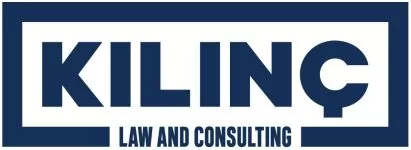The protection of intellectual property rights is fundamental to securing current and future economic prosperity in the European Union ("EU") economy, defending the creativity, innovation, and entrepreneurship of citizens and small and medium-sized enterprises across Europe, and infringing on intellectual property rights, in particular counterfeiting and piracy, harms the EU's economy and constitutes a major obstacle to economic growth.
To eliminate these negative effects of intellectual property infringements and counterfeits, the European Commission Intellectual Property Office ("EUIPO"), following the EU Blockathon 2018 competition, created the Blockhaton Platform in 2018 and started to develop several of projects to identify and track the authenticity of products placed on the market in the EU. In March 2022, EUPIO announced that a decentralized blockchain authentication platform will be launched by the end of 2023, with a design that envisages a blockchain infrastructure system aimed at (i) proving the authenticity of products whose data is entered into this system and (ii) preventing counterfeiting by analyzing counterfeit products and similar risks. The stages of this project are as follows in chronological order:
About the Anti-Counterfeiting Blockathon Infrastructure Project ("Project")
General View on Blockchain Technology
To briefly mention the term blockchain/blockchain, a blockchain is a chain that is formed by connecting blocks containing information to each other without being connected to any person or center, and this information cannot be deleted. The blockchain is defined as a distributed, shared, encrypted, irreversible, and incorruptible information store. The blockchain is a system that verifies and stores all transactions between users using the system with the help of the network and is defined as a database consisting of blocks whose integrity is reliable and queryable transactions that form these blocks.
In the blockchain system, transactions are kept in blocks and these blocks are linked together to form a chain. Blocks created within the framework of certain rules are written into the system. The block is then spread and added to all distributed ledgers. In creating a new block, the hash of the previous block is taken and the second block is generated and added to the chain. This structure is maintained with a structure that connects all blocks and continues with the hash of the previous block.
In chains formed by connecting each block and all those blocks verifies the information of the previous block and this verification system increases the reliability of the information in the chain. This verification system provided by the blockchain is the basis of the Project, which envisages the creation of a system that enables the authenticity of products to be confirmed through the use of each member of the supply chain.
Project and its Implementation Stages
For the Project to be realized the core part of the Project which is the blockchain infrastructure must first be developed. This blockchain system, which is the foundation of the Project, will be developed through the cooperation of various Project stakeholders united under the Blockathon Forum. This blockchain infrastructure will enable the Project's stakeholders to jointly transfer a digital twin of a product, which will be stamped with the immutable digital signature of the brand owner. In this context, the concept of a digital twin can be defined as a virtual model of a physical object that contains the model, design, and similar features of a physical object and presents this object in digital form. This developed infrastructure will not compete with existing solutions such as Non-Fungible Token ("NFT") platforms, private or public blockchain track and trace solutions, or existing and digitally enabled product identity serialization, but will instead enable authenticity verification by leveraging these platforms to guarantee that the product is authentic and who the current owner of the product is.
With this system, all actors and product owners along the supply chain of the product will be identified through a trust record in databases already created by EUIPO, such as TMview, DesignView, IPEP, etc, and will be added to the chain as a block of the blockchain. In particular, the first block of this blockchain, the EUPIO register of right holders, will be able to guarantee the identity of the right holders and verify their capacity to sign the NFT, which will then be associated with the physical products. Then, logistics operators, freight forwarders, and other carriers, all the actors that the product reaches until the product reaches the retailer or the end consumer will be added to this chain as a block so that the authenticity of the product can be checked by checking and verifying each stage that the product passes through if the blockchain technology.
In this context, according to the brochure prepared by EUPIO,
the stages of the Project where the blockchain system is
implemented are schematized as follows:
If it is necessary to detail the stages of the Project following the relevant scheme;
- EUIPO will register the identity of the right holders to the
system and verify that they are the producer of the product with an
NFT to be defined to them. In addition, a digital twin of the
products produced by the producers will be created and the products
will be packaged so that the digital twin of the product can be
tracked through the blockchain infrastructure.
- After the producers, upon the physical receipt of the products
by the logistics operators, the products will be scanned and the
NFT belonging to the products and the producer of the product will
be taken over by the logistics company by scanning the product. The
tracking system developed with the blockchain system infrastructure
will be initiated by the logistics companies receiving the product
and thus, it will be ensured that every stage of the product in the
supply chain can be monitored.
- When the transportation companies and carriers in the next
stage of the supply chain physically receive the products, the NFT
will be taken over by the transportation companies and carriers by
scanning the product labels. The relevant tracking system will be
updated upon the takeover of the NFT.
- In the process the authenticity of the product can be verified
by the competent supervisory authorities by scanning the label on
the product until the product reaches the consumer. By performing
this verification before the product reaches the consumer, a risk
assessment of the product can be carried out. In addition, it would
also be possible to assess customs duties if the product labels are
scanned during the inspection.
- Finally, when the product reaches the consumers, the digital twin of the product will also reach the consumers and the consumers will be able to follow all the processes that the product has gone through until it reaches them and they will be able to check whether the product is original or not and whether it is purchased from authorized producers or not by scanning the product label.
As a result, although the Project has not yet been implemented, EUPIO aims to publish the first version of the Project by 2023. It is assessed that the use of blockchain infrastructure within the scope of the developed Project will be highly effective in combating copyright, trademark, patent infringement, and counterfeiting, and also will minimize the negative impact of these infringements and counterfeiting on the EU economy.
The content of this article is intended to provide a general guide to the subject matter. Specialist advice should be sought about your specific circumstances.





